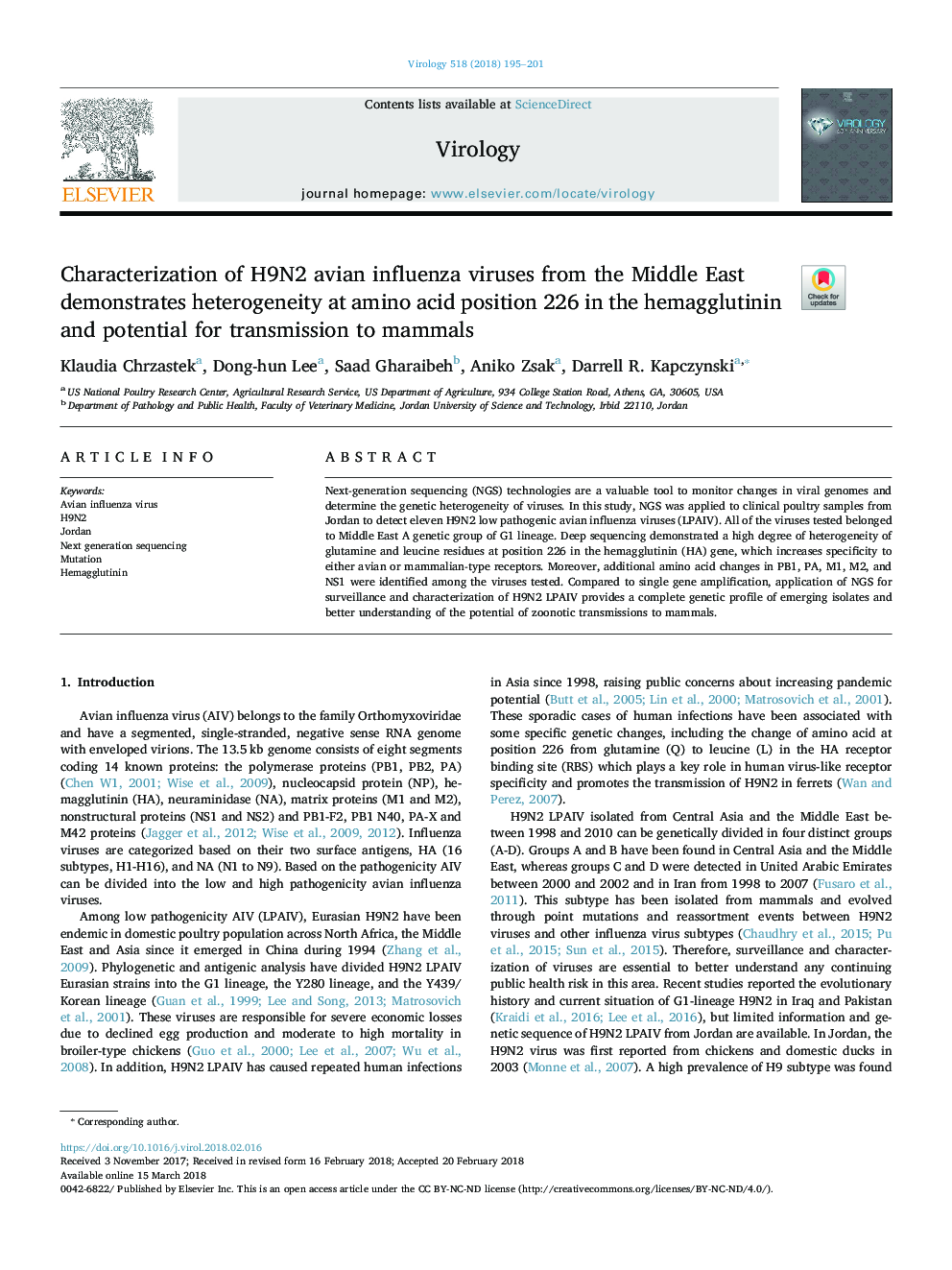| Article ID | Journal | Published Year | Pages | File Type |
|---|---|---|---|---|
| 8751464 | Virology | 2018 | 7 Pages |
Abstract
Next-generation sequencing (NGS) technologies are a valuable tool to monitor changes in viral genomes and determine the genetic heterogeneity of viruses. In this study, NGS was applied to clinical poultry samples from Jordan to detect eleven H9N2 low pathogenic avian influenza viruses (LPAIV). All of the viruses tested belonged to Middle East A genetic group of G1 lineage. Deep sequencing demonstrated a high degree of heterogeneity of glutamine and leucine residues at position 226 in the hemagglutinin (HA) gene, which increases specificity to either avian or mammalian-type receptors. Moreover, additional amino acid changes in PB1, PA, M1, M2, and NS1 were identified among the viruses tested. Compared to single gene amplification, application of NGS for surveillance and characterization of H9N2 LPAIV provides a complete genetic profile of emerging isolates and better understanding of the potential of zoonotic transmissions to mammals.
Related Topics
Life Sciences
Immunology and Microbiology
Virology
Authors
Klaudia Chrzastek, Dong-hun Lee, Saad Gharaibeh, Aniko Zsak, Darrell R. Kapczynski,
